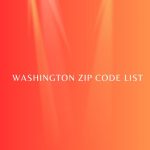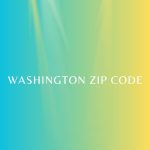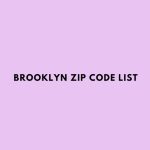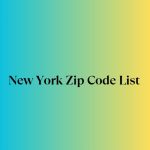Introduction
Zip codes might seem like just numbers, but in Manhattan, they hold a world of significance. From defining neighborhoods to impacting real estate prices, these codes are crucial. Let’s dive into the fascinating world of Manhattan’s zip codes and uncover how they shape the city’s unique fabric.
Understanding Zip Codes
Definition and Purpose
A zip code is a numerical code used by postal services to identify specific geographic regions for efficient mail delivery. In the U.S., zip codes were introduced by the United States Postal Service (USPS) in 1963 to streamline the sorting and delivery process.
How Zip Codes are Assigned
Zip codes are assigned based on population density, geographic boundaries, and the need for efficient mail distribution. In urban areas like Manhattan, zip codes can cover small neighborhoods due to high population density, while rural areas may have larger zip code regions.
Manhattan’s Zip Code Map
Overview of Manhattan’s Geography
Manhattan, the heart of New York City, is a densely populated urban island. Its zip codes reflect the diverse and vibrant neighborhoods, each with its own unique character and history.
Visual Representation of Zip Codes
Manhattan’s zip code map looks like a patchwork quilt, with each piece representing a different neighborhood. This segmentation helps in identifying and managing the diverse areas within the borough.
Major Zip Codes in Manhattan
10001: Chelsea and Midtown South
Spanning from 14th Street to 30th Street, this area is known for its art galleries, the High Line, and the bustling Chelsea Market.
10002: Lower East Side
A historically immigrant neighborhood, the Lower East Side is now a trendy area with a mix of old tenements and new luxury condos.
10003: East Village and Gramercy
From St. Mark’s Place to Union Square, this zip code covers vibrant areas with a mix of bohemian and upscale vibes.
10004: Financial District
Encompassing the southern tip of Manhattan, this area is home to Wall Street, Battery Park, and historic landmarks like the Statue of Liberty.
10005: Wall Street Area
A key financial hub, this zip code includes the New York Stock Exchange and several major financial institutions.
10006: World Trade Center Area
Post-9/11 redevelopment has transformed this area into a vibrant business and cultural center.
10007: Tribeca
Known for its trendy loft apartments and the annual Tribeca Film Festival, this area attracts both celebrities and creatives.
10009: Alphabet City
Part of the East Village, this area is known for its community gardens, nightlife, and artistic scene.
10010: Flatiron District and Gramercy Park
Home to the iconic Flatiron Building, this area blends historic charm with modern business hubs.
10011: Chelsea
A bustling neighborhood with a thriving LGBTQ+ community, art galleries, and the Chelsea Piers sports complex.
10012: Greenwich Village and Soho
From NYU to chic boutiques, this zip code covers a diverse and culturally rich area.
10013: Chinatown and Tribeca
A fusion of traditional Chinese culture and upscale living, this area offers a unique blend of old and new.
10014: West Village
Characterized by its cobblestone streets and historic brownstones, the West Village exudes charm and sophistication.
Unique Characteristics of Each Zip Code
Demographics
Each zip code in Manhattan has its own demographic profile, reflecting the diversity of the city’s population. From young professionals in Tribeca to long-time residents in the Lower East Side, the mix varies widely.
Landmarks and Attractions
Manhattan’s zip codes are home to world-famous landmarks and hidden gems alike. From the Empire State Building in 10001 to the jazz clubs of Greenwich Village in 10012, each area has something special to offer.
Housing and Real Estate Trends
Real estate prices in Manhattan vary dramatically by zip code. High-demand areas like Tribeca (10007) and the West Village (10014) often see sky-high prices, while other areas might offer more affordable options.
How Zip Codes Affect Daily Life in Manhattan
Real Estate Prices
Zip codes are a major factor in determining property values. High-demand zip codes like 10007 (Tribeca) command premium prices due to their desirability.
School Districts
School admissions in Manhattan are often influenced by zip codes, with certain areas feeding into highly sought-after public and private schools.
Business Locations
Businesses choose locations based on the demographics and foot traffic associated with different zip codes. Areas like 10001 and 10004 are prime spots for corporate offices and retail stores.
Historical Development of Zip Codes in Manhattan
Origin and Evolution
Manhattan’s zip code system has evolved since its inception in the 1960s, reflecting changes in population density, urban development, and postal service needs.
Changes Over Time
As neighborhoods have developed and demographics shifted, zip codes have been adjusted to better serve the community’s needs.
Zip Codes and Transportation
Public Transit Accessibility
Manhattan’s public transit system is extensive, with subway lines and bus routes serving all zip codes. However, the level of accessibility can vary, influencing daily commutes and property values.
Major Roads and Highways
Key roads like Broadway and major highways like the FDR Drive run through multiple zip codes, impacting traffic flow and accessibility.
The Role of Zip Codes in Emergency Services
Police Precincts
Each zip code is served by a specific police precinct, affecting response times and community policing efforts.
Fire Stations
Fire coverage is also organized by zip code, with stations strategically placed to ensure quick response times.
Hospitals and Medical Services
Zip codes determine the nearest hospitals and medical facilities, crucial for emergency services and healthcare access.
Economic Impact of Zip Codes
Business Hubs
Manhattan’s financial district (10004 and 10005) is a global economic powerhouse, while other zip codes like 10001 (Chelsea) are known for their thriving tech and creative industries.
Retail and Commerce Areas
Areas like 10011 (Chelsea) and 10012 (Soho) are renowned for their shopping districts, attracting both locals and tourists.
Cultural and Social Influence of Zip Codes
Neighborhood Identity
Zip codes contribute to the identity and character of Manhattan’s neighborhoods, fostering a sense of community and belonging.
Community Events and Activities
Each zip code hosts its own events, from street fairs to cultural festivals, enhancing the social fabric of the area.
Challenges and Issues with Zip Codes
Disparities and Inequities
Some zip codes face challenges related to economic disparities, affecting access to resources and services.
Gentrification and Its Effects
Gentrification in certain zip codes has led to rising property prices and displacement of long-time residents, altering the neighborhood dynamics.
Future of Zip Codes in Manhattan
Potential Changes and Developments
As Manhattan continues to grow and evolve, zip codes may be redefined to better reflect new developments and population shifts.
Technological Advancements
Advances in technology, such as digital mapping and GPS, could lead to more dynamic and flexible zip code systems in the future.
Conclusion
Manhattan’s zip codes are more than just numbers; they are a vital part of the city’s identity, affecting everything from real estate to cultural life. Understanding these codes can offer valuable insights into the diverse and dynamic nature of this iconic borough.
FAQs
How are Manhattan’s zip codes determined?
Manhattan’s zip codes are determined by the United States Postal Service based on factors like population density, geographic boundaries, and mail delivery efficiency.
Which Manhattan zip code is the most expensive?
Typically, Tribeca’s 10007 is among the most expensive zip codes in Manhattan, known for its luxury real estate and high-end amenities.
What is the significance of the 10001 zip code?
The 10001 zip code, covering parts of Chelsea and Midtown South, is significant for its mix of art galleries, businesses, and iconic sites like the High Line.
How do zip codes impact school admissions in Manhattan?
Zip codes often determine school zones, affecting eligibility for certain public schools and impacting the admissions process for families.
Are there any plans to change Manhattan’s zip code system?
While there are no immediate plans for major changes, ongoing urban development and technological advancements could lead to future adjustments in Manhattan’s zip code system.










